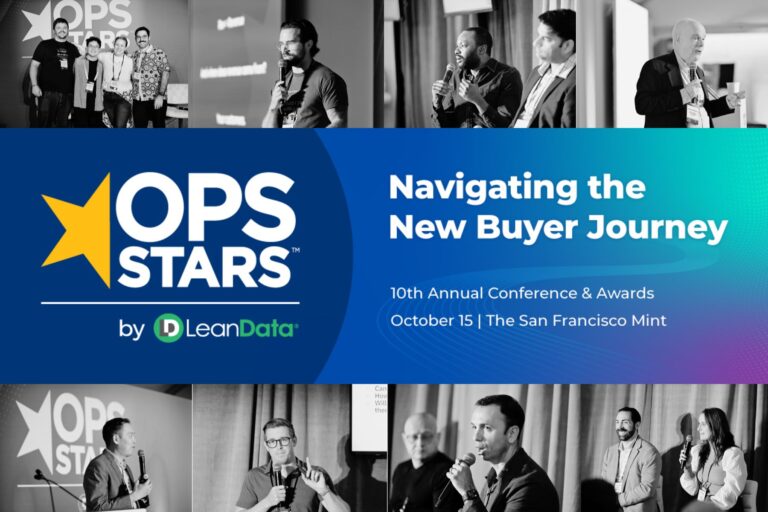If you’re ready to operate your business more efficiently and unlock additional growth opportunities, it’s time to devise your plan to implement a revenue operations approach for your business. Implementing revenue operations will also enable your business to deliver a best-in-class customer experience, transitioning a lead to a loyal customer.
To set your organization up for success with this system, you’ll need to focus on the four foundational components of a revenue operations approach: people, process, data, and your technology stack. Here’s how you can implement revenue operations (Rev Ops) at your company and start reaping rewards.
#1: People
A revenue operations-focused business has three primary supporting divisions: sales, marketing, and customer service or customer success. Each division should be brought together to create one Rev Ops team. While each division should maintain their unique focus, they will also work closely together and collaborate.
The traits you want to emphasize among these employees are collaboration, a team player mentality, and a belief in the importance of interconnectivity – no one division should feel they are the true star of the show. Each division contributes equally to the success of the business. When creating a performance evaluation system for your Rev Ops people, it’s important to reinforce the “one team” approach by incorporating performance based on individual and group metrics.
#2: Processes
Next, implement processes to ensure collaboration between your Rev Ops divisions, including sales, marketing, and customer service. Work with the leaders of each team to design a data-sharing process that empowers each division without adding too much additional work. Technology can be leveraged to allow for seamless data sharing. Each team should contribute to, and reference, one CRM for all leads and customers.
Finally, there should be a continuous feedback loop to help marketing and sales improve their processes. There should be analysis of which marketing content converts the most customers and which types of leads make the best customers. A feedback loop process is essential to improvement, growth of the business, and increasing revenue.
Often, a solution like LeanData can be the most effective way to connect people and data together to create one cohesive Rev Ops team.
#3: Data and KPIs
Data is usually the hardest part to establishing a revenue operations strategy. A successful revenue operations approach relies heavily on high quality data and the sharing of data. Progress toward improvement can be monitored via key performance indicators (KPIs), or specific data points you aim to improve.
- High Quality Data: collecting and leveraging the best data starts with information about your leads and customers. Your business should be collecting a lead’s job title, company name, location, challenges they face, content consumed, and details about which services or products they are interested in. Any of this information could be collected at different times and from different sources. From form submissions and web pages viewed, to conversations with a sales executive, all lead data must be collected and also made available to all divisions of your Rev Ops team. The final level of data collection should be the lifetime value of a customer (LTV). On an ongoing basis, your business should be tracking the total spend by customer and overall organization.
- KPIs for Rev Ops Success: KPIs to monitor to measure the success of your Rev Ops team and systems should include the number of new leads per month (marketing), pages viewed for a visitor’s first session, forms submitted per month, number of follow-up meetings with leads, and the number of converted leads per month. Other key KPIs to track to ensure successful handoff between sales and customer service would be customer service scores, overall customer satisfaction scores, and, if implemented, customer onboarding survey scores.
As time goes on, you will want to improve upon the quality of your business’ customer acquisition by acquiring more high value customers. You should aim to improve the total number of high LTV customers and the average LTV of all customers. High LTV customers will scale your business’ growth and increase profitability. Your customer service or customer success team must keep track of a customer’s total spending, or their LTV. Analysis can be done on the highest LTV customers in order to increase efforts to convert similar leads via a feedback loop to the sales and marketing divisions of your Rev Ops team.
#4: Technology
To accomplish a revenue operations approach, you’re going to need the right revenue operations technology stack. The basics of a Rev Tech stack include a CRM, marketing automation tools, customer order management, customer communication tracking, website analytics, and partner relationship management (powering insights beyond your core team).
Your CRM should be the central hub of information, accessed by all Rev Ops divisions. Data must flow in from your website, referring websites or platforms, order systems/POS, communication platforms such as email and customer service tickets, and any additional marketing services, including, for example, reviews or content tools. The more you can automatically map leads to organizations and data to the right lead within your CRM, the more efficient your teams will be.
You’ll also need marketing tools to automate actions based on a lead’s progression through the sales funnel (drip email marketing, email campaigns, and responsive communication). Ideally, sales teams will also be able to leverage automated lead scoring based on lead behavior to prioritize leads and to determine the most effective next step to move the lead closer to conversion.
All data created or captured by marketing and sales (interest, goals, challenges, and/or needs) should be available to customer service to ensure a top-notch customer relationship kick off once a lead converts.
Finally, information about a lead-now-customer, especially a customer with a high LTV, should be analyzed and feedback should be provided to marketing to create more converting collateral and fuel campaigns to target the highest quality most ideal leads possible.
LeanData works across a variety of best in class business and marketing tools, from Salesforce to Outreach/SalesLoft, Drift/Intercom, DiscoverOrg/Clearbit, Bombbomb/Vidyard, and G2, to bring all essential lead data to one place for maximum leverage. To implement a revenue operations strategy quickly and successfully, build out your team and then leverage a solution like LeanData to do just about everything else.
Are you interested in learning more about our partner program? Contact LeanData today!









